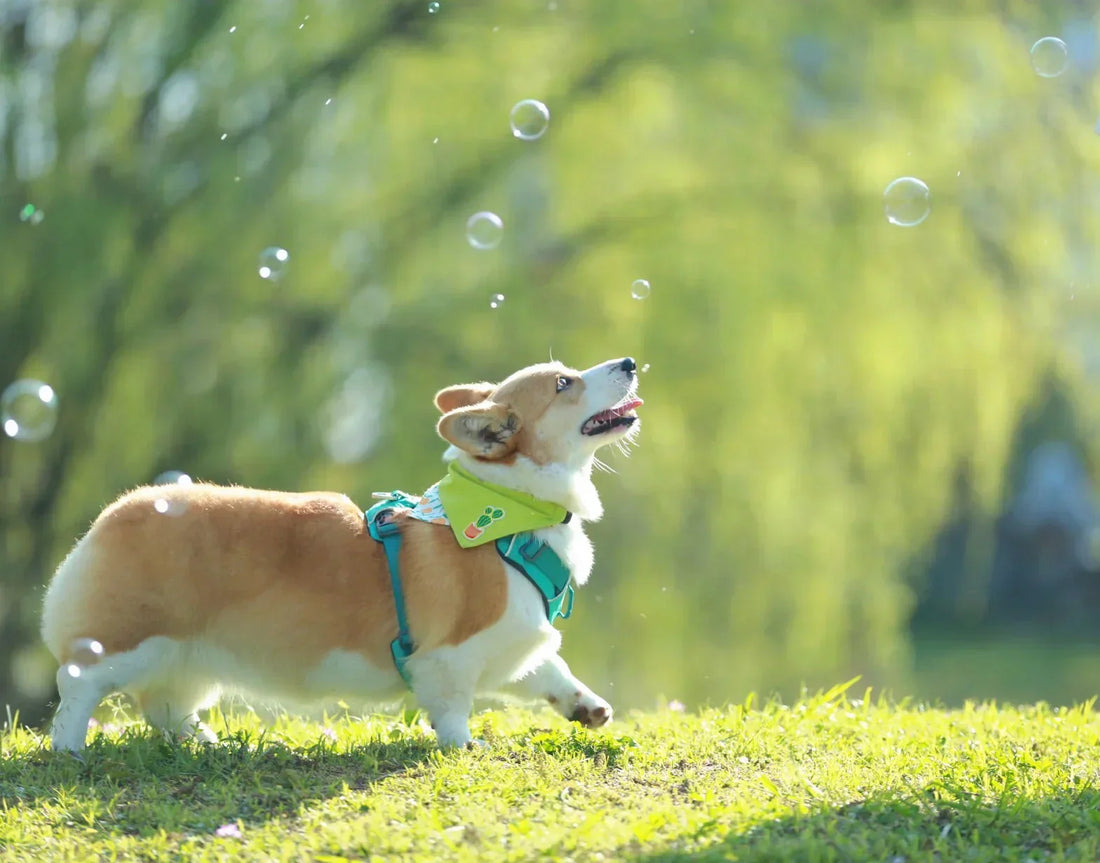Decoding Your Dog's Language: Understanding 28 Canine Messages

Your emotions can be expressed through words, tears and laughter; while your furry companion speaks through actions and sounds. Though we might not share the same language, both humans and dogs express themselves instantly recognizable ways - whether through wagging tails or soulful barks.
As a pet parent, understanding these behaviors is paramount to both you and your four-legged friend's well being. Knowing how to read your four-legged's signals opens up new levels in their relationship. Let's delve into canine communication together by exploring 28 behaviors your canine could display!
Vocal Cues: The Language of Communication
Dogs exhibit a remarkable variety of vocalizations, each conveying specific meaning. Ranging from deep growls and low barks to excited high pitches barks and excited low barks - what these sounds really say are:
1.Howling
A mournful howl lasting more than 10 seconds could be an indication that your dog feels lonely; or alternatively it could simply mean they're excited or content.
2.Barking
It comes in many different forms! Barking may signal potential danger or simply encourage playful interaction - all it takes is one quick, sharp bark to send alarming signals! However, gentle barks from playful pets could invite participation - the context always matters!
3.Growling
Low-pitched growls may sound alarming to humans. But not all growls indicate aggression: high-pitched playful noises like those produced when playing tug of war could also signal enjoyment for your canine pal.
4.Whinning or Yelping
A high-pitched whine usually indicates discomfort of both physical and psychological nature in our animals. If yours suddenly makes this sound, take note to identify possible pain or anxiety triggers in unfamiliar settings, particularly where there may be unfamiliar humans nearby.
5.Grunting
Dogs will grunt to express how relaxed or contented they feel - be it while stretching, resting or greeting someone new - it's their way of saying, 'I'm content here."
6.Whimpering
Soft and gentle whimpers from your dog generally indicate they feel uncomfortable or require something--food, attention or affection--they could even use this a greeting gesture!
7.Panting
Panting provides an effective means of cooling off. However, panting combined with signs of distress could indicate pain or discomfort caused by hot temperatures or physical exertion.
Nonverbal Clues: Your Dog's Posture Tells an Interesting Tale
Dogs don't just use their voices to convey emotions--they also use body language. Let's investigate some of their subtle signals!
8.Head Tilting
When your pup tilts its head to understand something--whether that be your tone of voice, an unfamiliar noise, or some new sensation - they could be showing signs of curiosity and attentiveness. This gesture indicates how eager they are to learn more!
9.Head Pressing
A dog who presses his or her head against walls or other rigid objects appears distressed, which could signal medical emergency (for instance a brain issue or poisoning). If this behavior persists, see your vet immediately to address these concerns.
10.Squinting or Blinking
When your dog blinks or squints, they are trying to relax or relieve discomfort; sometimes even trying to comfort you if they sense anxiety in you as well. It could also be their way of telling you everything will be OK in their minds as they come alive before yours!
11.Staring
To indicate alertness or threat. A fleeting look away can indicate respect and submission.
12.Puppy Eyes Its
Are those soulful eyes that melt your heart entrancing to you or simply asking you for attention from their dog? Perhaps those large puppy-dog eyes that charm and disarm us could just be showing affection! Who could resist such irresistibly cute eyes!
Ear, Eyes and Nose as Power Sources of Feelings: Gaining Further Insight Into Their Sensations
Your dog's sense of smell, eye movements and ear positions give us insight into his or her state of mind: these factors offer vital clues as to their emotions and wellbeing.
13.Ear Position
Raised ears may signal curiosity or aggression while flattened ones indicate fear or insecurity; flicking ears typically signify their listening intently to something unfamiliar.
14.Sniffing
A dog's impressive sense of smell provides them with an invaluable way to access and understand their world. By sniffing at people, other dogs or the air they can assess potential threats or make new connections - something humans sometimes neglect doing!
What Your Dog Is Really Showing With Their Mouth Movements (Lips, Teeth & Tongue Movements)
Your dog's mouth can be an effective means of communication; whether that means offering up a simple lick or making playful movements such as snapping.
15.Biting
In puppies, nibbling is typically playful behavior, while adult dogs' biting could indicate fear or aggression - it is therefore important to monitor these behaviors closely in order to distinguish between playful nipping and more serious incidents.
16.Licking
Licking is often an indicator of uncertainty or stress for dogs and can even serve as a form of grooming, grooming and making friends - when your pup licks another animal it could indicate grooming needs or socialization purposes but too much licking could also point out health concerns in both parties involved.
17.Chewing
Chewing can be an instinctual action for puppies when teething; adults may chew out of boredom or mental stimulation needs; providing suitable chew toys will satisfy this instinctual behavior and satisfy it more completely.
18.Yawning
A yawn may indicate simply being tired, or it could indicate stress and/or anxiety--particularly in unfamiliar or uncomfortable settings. Don't dismiss its significance immediately - consider its context first before dismissing.
19.Tongue Out to the Side
Your pup usually displays this behavior to indicate their joy or contentment, however if this behavior persists it might be worth checking for health concerns such as "Hanging Tongue Syndrome."
Tail Language is at the Core of Canine Communication
Wagging tails can express everything from joy to anxiety in dogs - don't underestimate its expressive power!
20.Tail Wag
Not all tail wags are created equally! A high tail wag indicates excitement while one to the left could indicate anger. Furthermore, speed of tail wagging matters--quick wagging indicates exuberance while slow wagging may signal more reserved reactions.
21.Tail Chasing
Chasing their tail can sometimes be a telltale sign of obsessive-compulsive disorder (OCD). If your dog keeps chasing his/her own tail repeatedly, you may need to intervene and redirect his or her focus away from self-harm in order to ensure safety for everyone involved.
Utilizing Their Legs and Paws: Physical Clues to Their Emotional State
Paws and legs are used by dogs as means of communication, from playful digging to raising their paws for attention. Here is how to decode those gestures:
22.Digging
Diggers instinctively dig, whether to find comfort, cool off or discover hidden treasure. While digging can be amusing at times, excessive digging could signal boredom or discomfort.
23.Standing on Hind Legs
Your dog doesn't stand on their hind legs to provide better views--it is more often used as an expression of affection or request for interaction! They need your attention!
24.Raising Paws
Raising one paw is often seen as a signal that indicates playful energy or the desire for something special such as treats; their way of asking, "Can we play now?"
Understanding Your Dog's Emotions State
Your pup's body language can convey many different feelings ranging from excitement to fearfulness. Here are a few behaviors to watch out for:
25.An Exposed Belly/Playfulness
An exposed belly signals trust and playfulness; it is their way of telling us "I trust you!" But be wary: an exposed belly may also serve as a defensive measure against being petted!
26.Circling Before Lying Down
Although this behavior might seem peculiar, your pup could be using this tactic to find his most comfy spot before lying down. Circling might also indicate discomfort; so keep an eye out for signs of pain!
27.Bum Scooting
When your pup drags his bottom around on the ground, this could be an indicator of anal gland inflammation and should prompt you to visit a vet immediately!
28.Mounting
Although mounting may look inappropriate, its purpose can often be an attention-seeking or playful act from younger dogs.
Now That You Understand the Signs
By understanding these behaviors and their implications for your dog's emotional world, you are better prepared to understand his needs, fears, and joys better. Tuning in to his signals allows you to provide them with care they require while strengthening both their wellbeing and your bond together.

